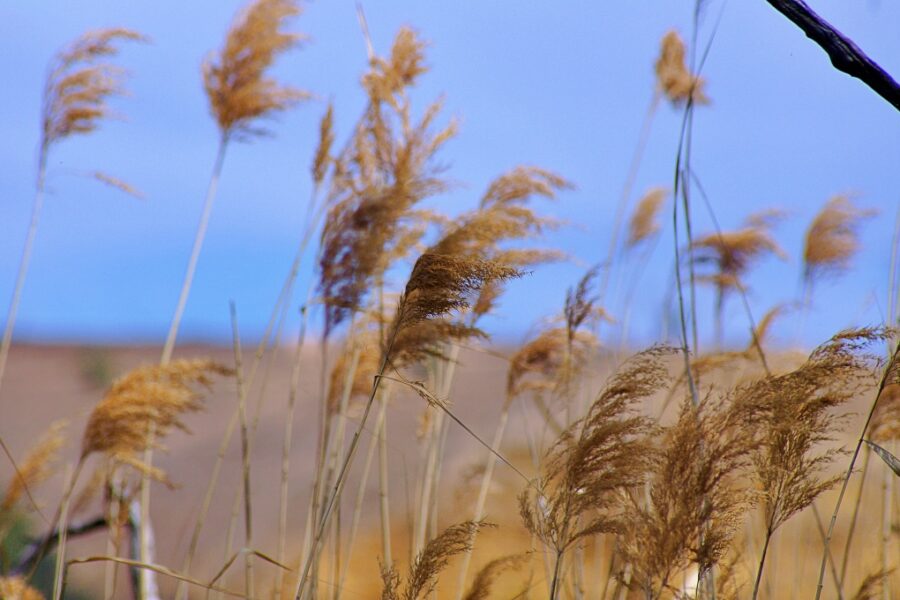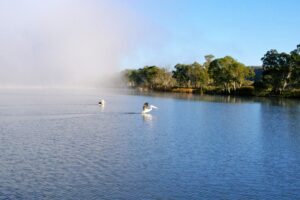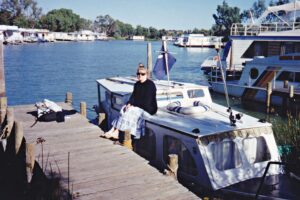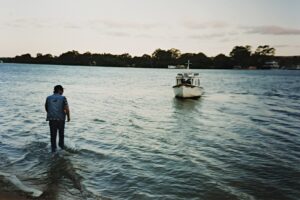The little wooden jetty felt like it was going to collapse under us.
Following Fred, we stepped over the gaps where boards were missing, the river only a foot underneath. The fresh scent of the river filled the air, mingling with the earthy smell of the mud. Fred kind-of reminded me of an American country singer the way he looked, a baseball cap, a flannelette shirt under his denim cut off jacket and faded blue jeans. Even though he’d told us of his ill health, you could still see the strength in his arm muscles as he grabbed Huck’s mooring rope and pulled the boat closer to the old jetty so we could all get on board.
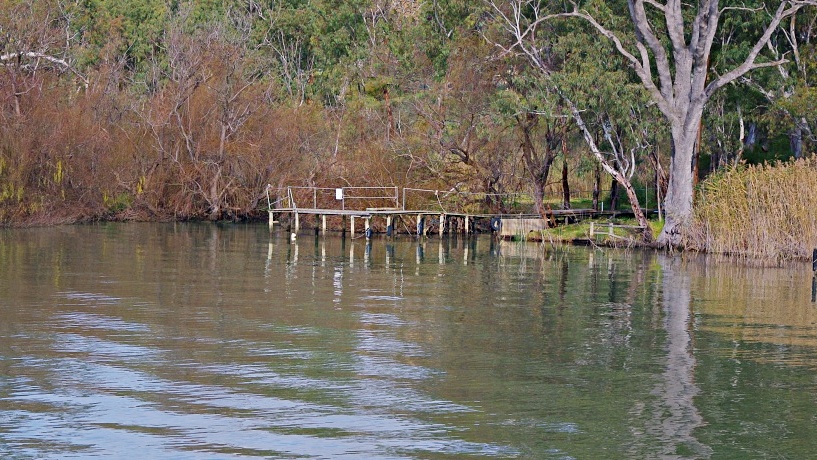
Stepping onto the narrow edge of the boat, I almost slipped out of my sandals.
“Hang onto the rail along the top”, Fred said, “Get in one at a time, she’s got a fair bit of roll”.
Awkwardly, I held the top rail with one hand as I ducked my head in and under the rear roof and stepped down onto the royal blue seat and then down again to the same blue painted floor. I couldn’t quite stand up under the roof at the back even though I’m only just 5 foot tall, so I sat down on the opposite side while Finchy and Fred came aboard. I’d spent time fishing in v-bottom boats in the sea so I knew to go to the opposite side to even out the weight distribution. The boat certainly had a lot of roll I noticed as the side I’d just stepped onto dipped right down to the water with both blokes on the same side.
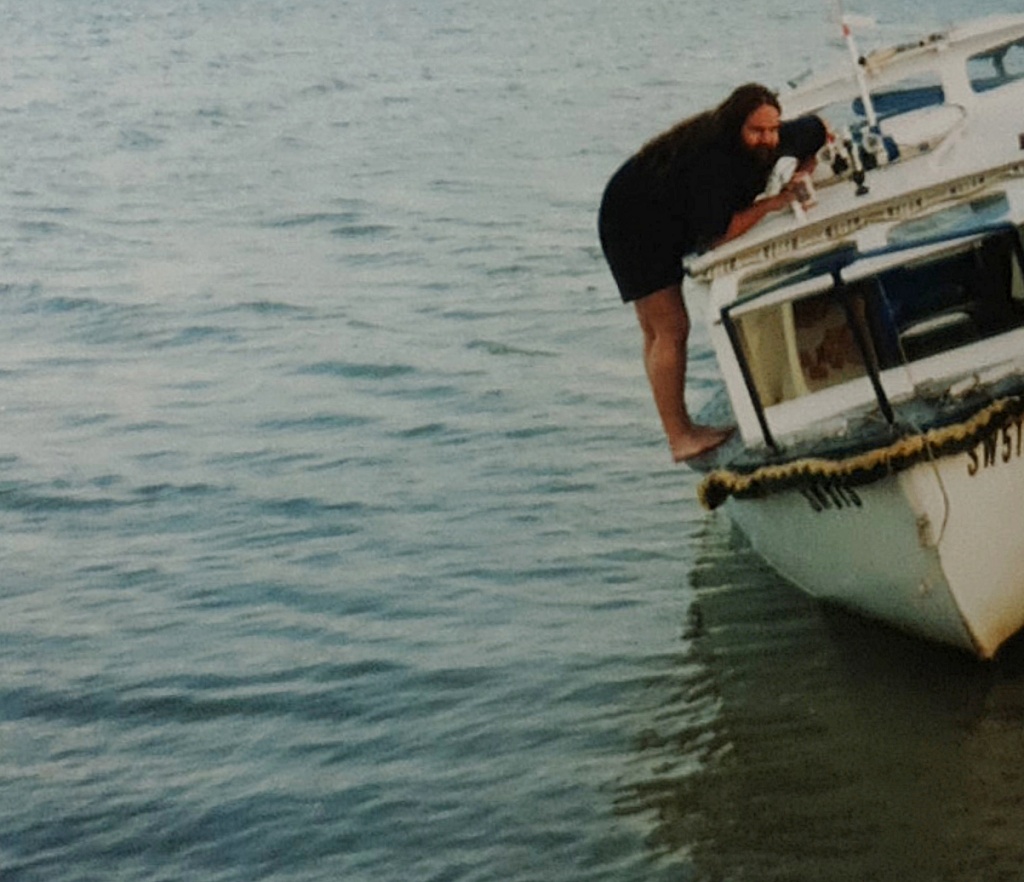
Fred took us for a short cruise showing us the basics of operating the boat. He was pretty matter-of-fact about it all, a no-nonsense kind of guy but I felt comfortable listening to him. It was all pretty basic, an engine and a rudder.
The engine coughed and spluttered a bit but Fred assured us all we needed to do was, “Adjust your mixture” and we should be right. I had no idea what that meant but as I watched Finchy spin the flywheel to start the engine, I was sure he knew what was going on. Fred showed us the engine, a Blaxland twin with two red cylinders that sat in the middle of the boat under the step going into the cabin.
He got Finchy to have a couple of practice runs with it before we left.
Standing in the cabin, Finchy wrapped the starter cord around the flywheel a few times and gave it a quick pull. Once the Blaxland was going, its sound was a monotonous metronomic “putt-putt-putt-putt”. Finchy hung the cord back on its hook just inside the door and looked up at Fred.
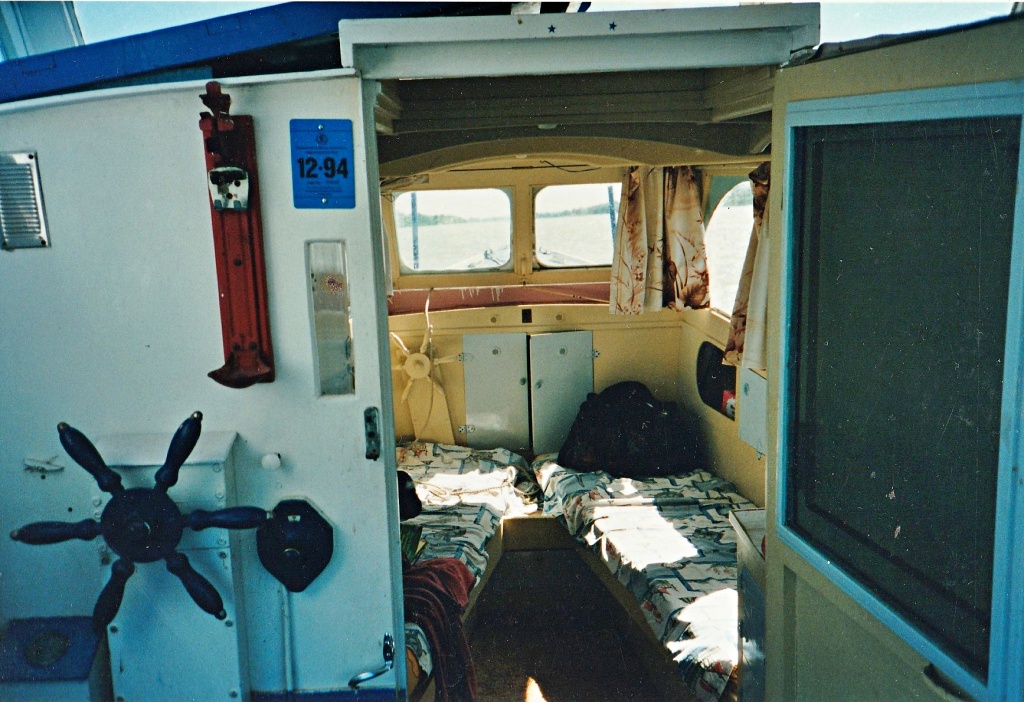
“Now push the dog clutch forward”, Fred told him, his voice instructive without any know-it-all or wise guy tones to it. “It’s that lever behind the engine”. I felt the boat clunk into gear and we started to move. Fred was at the back on the rudder, holding the large worn wooden handle firm as we moved forward.
“Lean over the side there Linda and tell me if any waters coming out of the exhaust?” After our short cruise I was confident in confirming the exhaust water, but that was all I was confident about.
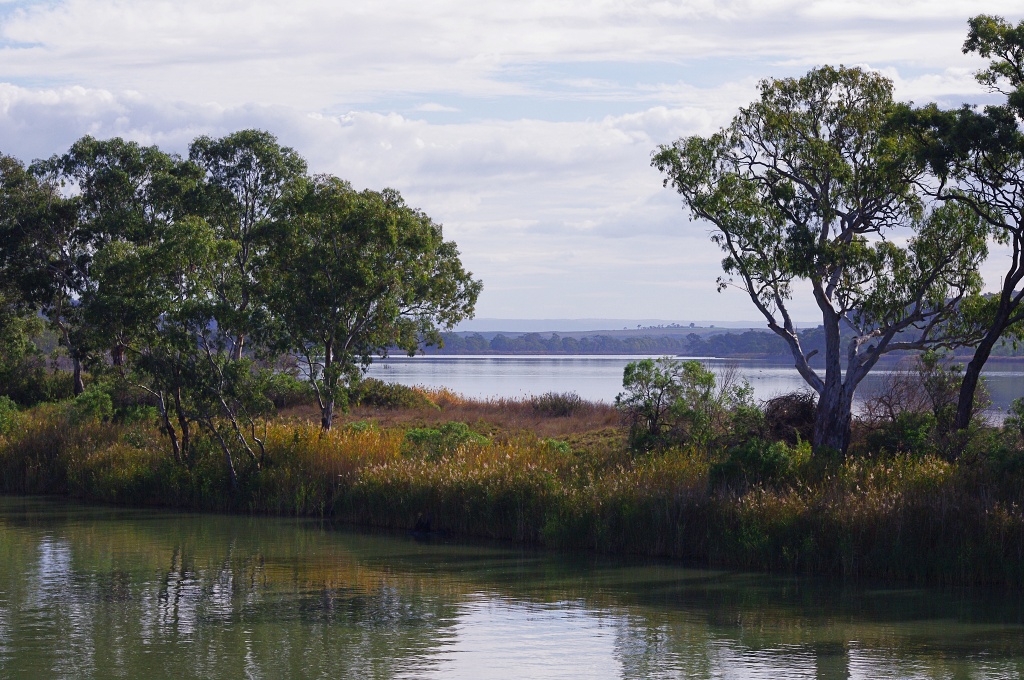
We left Fred standing on the rickety little jetty, a solitary figure silhouetted against the huge expanse of winding river and shallow backwaters behind him. From my position seated on the back of Huck, the name we quite quickly and affectionately adopted for our boat, I glanced back and could see Fred. His hat’s peak down over his face, his eyes fixed on Huck Finn slowly moving away from him, carrying our two grinning faces on the back as it began to putt downstream.
We were headed for Mannum at the 152km mark of the river. Setting off in Huck Finn for the first time from Younghusband at the 168km mark, we had 16km to travel, then onto Murray Bridge, another 40kms where we’d leave Huck in the marina until we finished preparations for our upcoming journey.
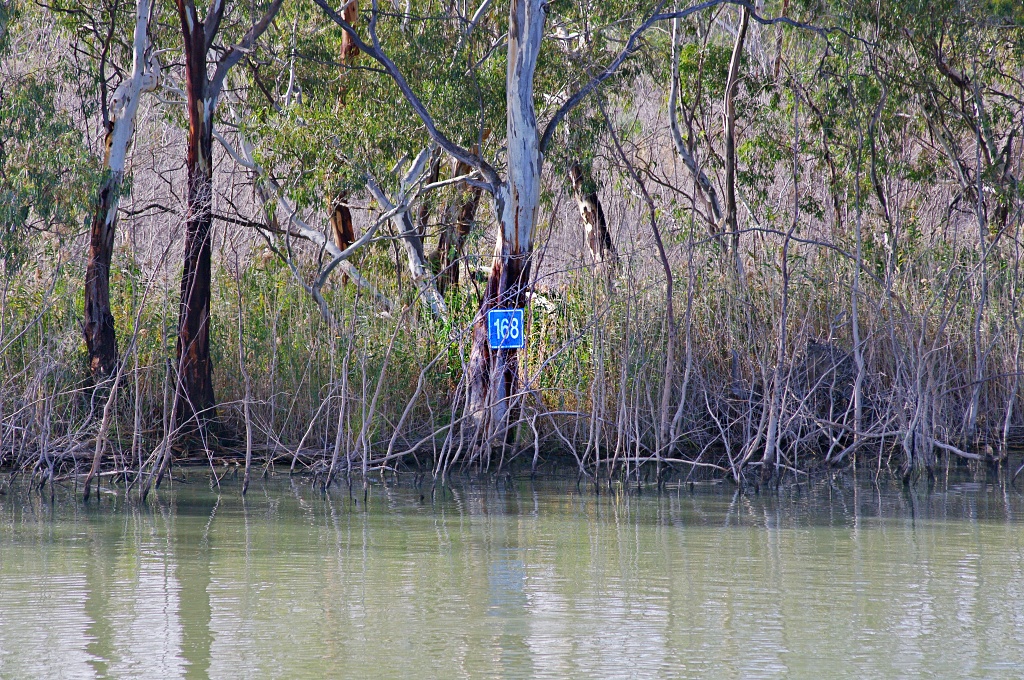
During the 1800’s, the Murray River had many paddle steamers transporting goods along its course.
After the river was surveyed in 1870, distance numbers were carved into trees on the banks. The numbered trees assisted the paddle steamer Captains with navigation.
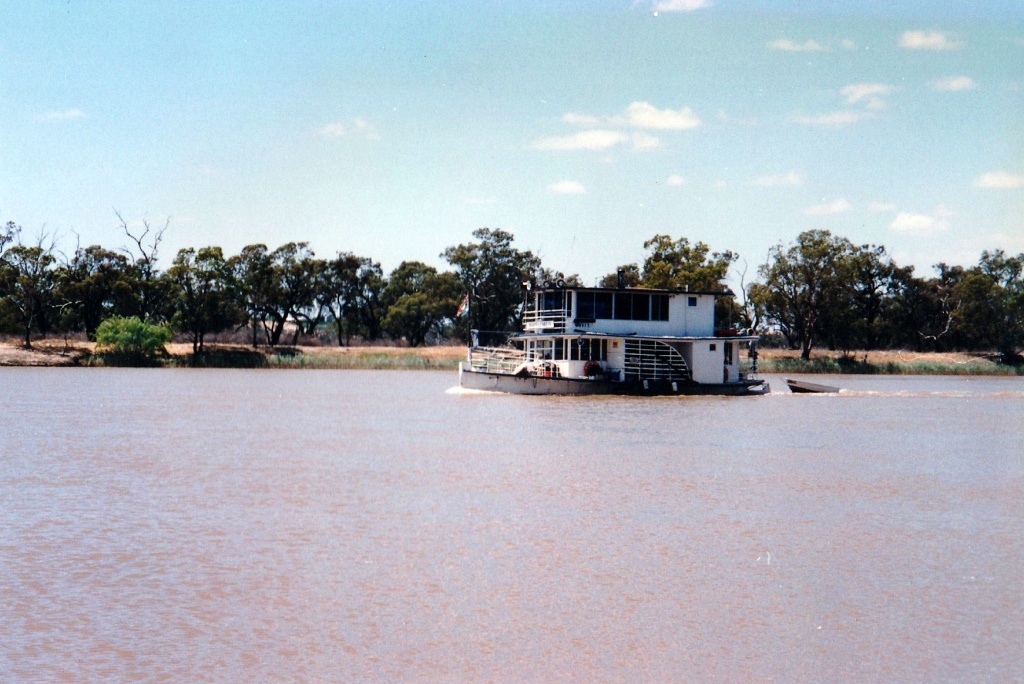
In the early 1990’s, the mile trees were replaced with kilometre markers which start at zero at the Murray mouth. As you go upstream the numbers increase. The river’s mouth or its farthest point from its source, is at Goolwa where the mighty Murray flows into the Southern Ocean.
Finchy couldn’t hide his excitement as we putted along.
“Huck is a great find and not a bad price,” he said looking across at me. “And how’s its history?” Fred had found Huck on the bottom of the river and had salvaged it, floating it out of the muck and slime. Admittedly he’d done quite a bit of restoration to it but there was a lot more to do and we knew that we’d bought a ‘fixer upper’. Fred had renamed the boat “Huck Finn” and we told him we wouldn’t change it.
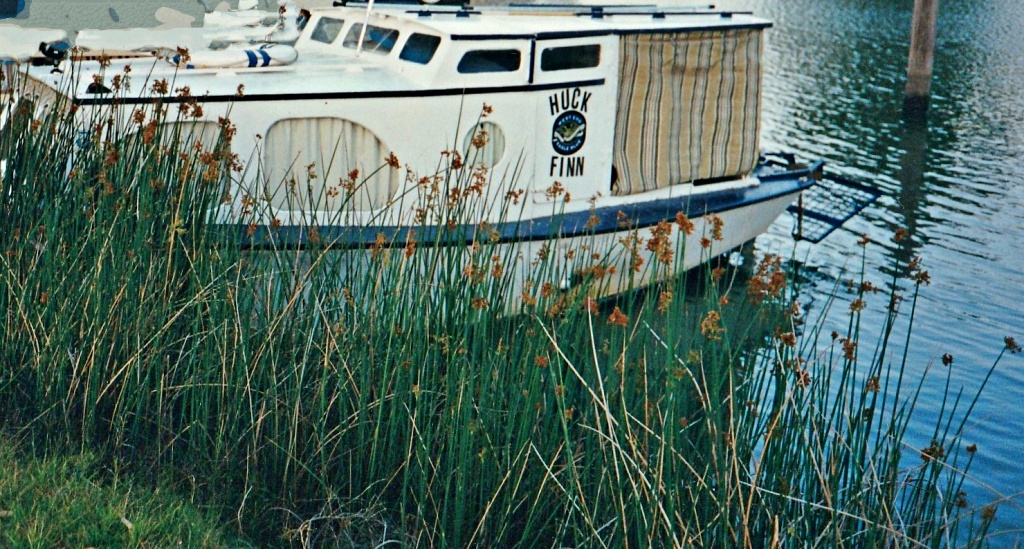
The idea that I was going to live in a boat that had been underwater for all those years was a bit disconcerting to me. I wasn’t concerned about the strength of the timber as I knew that timber underwater is preserved for a time. When the Ash Wednesday fires burnt South Australia’s pine forests down in the South East back in 1983, the Woods and Forests had stored hundreds of pine logs in Lake Bonney there for years. That dreadful day remains clear in my mind, as I was completing my training as a nurse at the Mt Gambier hospital.
From inside Huck’s cabin, I watch the scenery slowly pass by. The tall, hay-coloured reeds swaying in the wind, their feathery golden tips rippling like waves. On the river bank, an occasional river red gum tree rising up from the reeds, its branches reaching out like wild wooden arms.
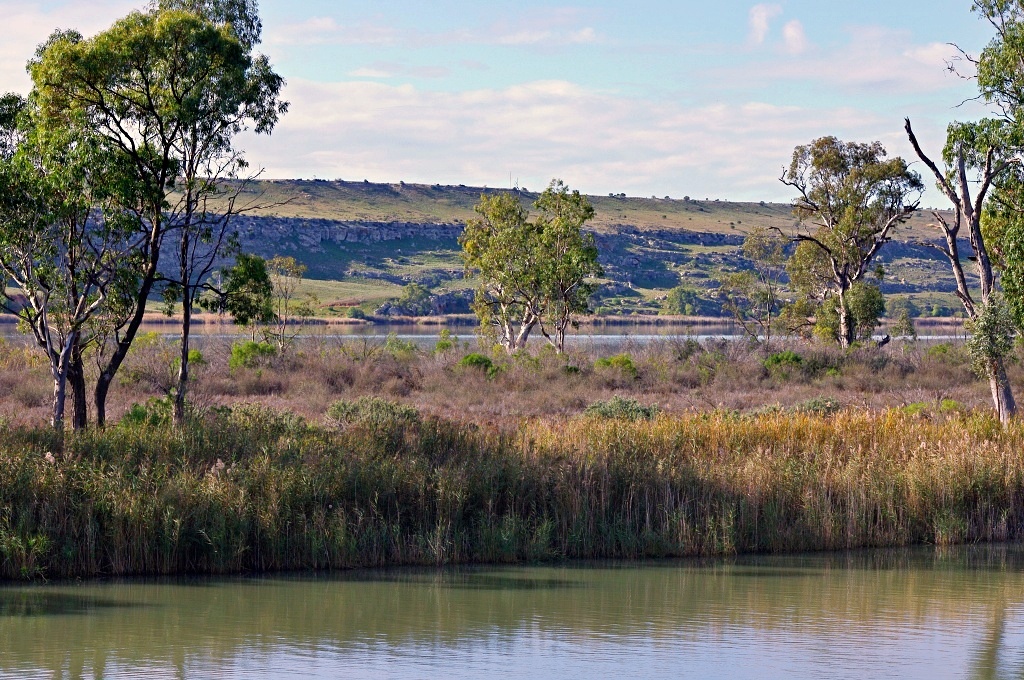
Out beyond the lower banks on the opposite side are hazy backwaters and an occasional farm building off in the distance, some farm implement sheds with corrugated iron shining bright in the mid-afternoon sun, tractors standing idle.
“Not much birdlife around today” I said.
“What’s that?” Finchy yelled from his position on the rudder at the back of the boat. I went out to join him and was surprised how windy it was. “Bit blowy back here”. A fish jumped in the water between our boat and some low cliffs, its splash echoing across the surface.
We sat side by side, taking it all in, his right hand between us with a firm grip on the rudder. I had to move a bit more to my side to allow for the rudder movement as we turned the first corner, my legs a bit squashed between the rudder and the corner post of the roof. In the distance ahead, the hazy backwaters were darkening as clouds from the coast were arriving on the river.
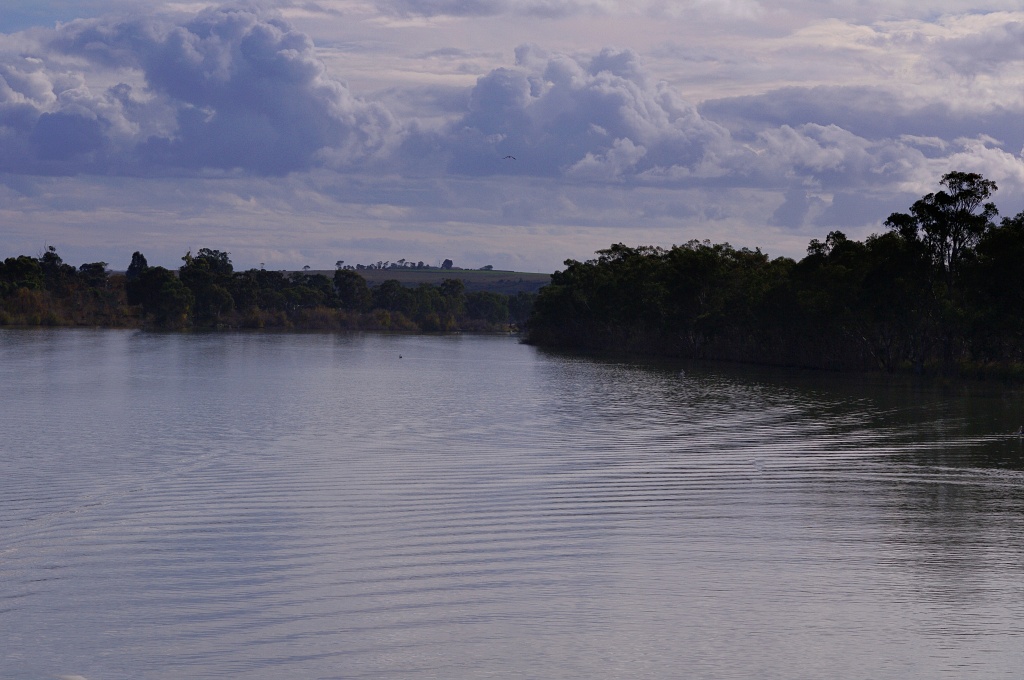
“This head winds slowing us up a bit,” Finchy said. “Might take a bit longer at this speed. There’s another corner coming up, might not be so bad after that”.
It wasn’t as bad, it was worse. There were waves, big waves, breaking over the front of Huck. The nose of the boat was going up and down and the back of the boat looked like the water was going to come in over the sides as it dipped down. I’d heard Finchy’s dad’s story about a family houseboat trip in very rough water and extremely strong winds so I knew this wasn’t completely new to Finchy. But it was to me. They’d talked about the notorious stretch of river known as Pellaring Reach where, with the right conditions, a strong sou-wester, can quickly whip the river’s surface into big white caps.
Huck only did 6 or 7kms an hour at top speed and it felt like we were barely moving.
The sky was turning grey. Ominous clouds now covering the sun completely. We glanced at each other, neither saying anything as another big splash of water came in over the side, the spray wetting us both.
I could feel the boat rocking back and forth, and I could hear the waves crashing against the hull. The wind was so strong that it was almost impossible to talk. I closed my eyes and took a deep breath, trying to stay calm.
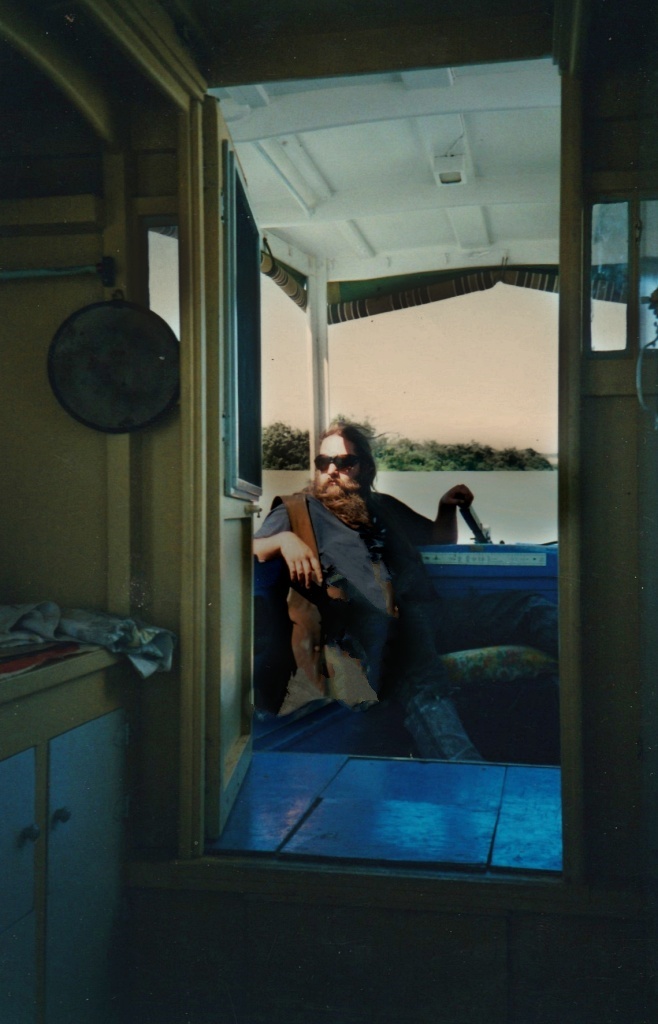
Finchy was still steering the boat, but he looked worried. I could see the muscles in his arms straining as he held on to the rudder. It was shuddering against the conflicting currents and swells.
“We’re going to be okay,” he said, but his voice didn’t sound very convincing.
I didn’t know if he was trying to reassure me or himself.
Click the link below for the next episode.
Or click on the tag below ‘Floating through River Life’ below to see all Episodes

